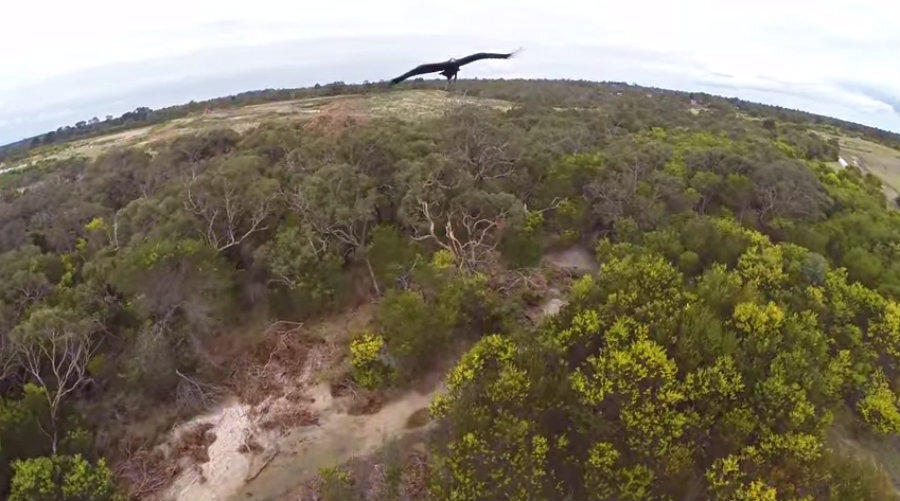Angry eagle attacks UAV: How do drones affect wildlife?
Loading...
Drones and wildlife don’t always mix well.
That was the lesson drone operator Adam Lancaster learned after an angry eagle knocked his unmanned aerial vehicle (UAV) straight out of the sky.
“This is the last thing a small bird sees when a Wedge-Tailed Eagle decides that you are dinner," Mr. Lancaster, who posts under the name Melbourne Aerial Video, wrote in the description for the YouTube video that featured the incident, which has since gone viral. “Do not fly drones near birds of prey.”
It’s good advice. The growing popularity of drones has led to their operation in a number of useful enterprises: military defense, medicine delivery, scientific research, even conservation efforts. But humans have yet to fully understand the impact UAVs have on the environment – and the creatures present – in the places they fly.
Lancaster, for instance, isn’t the first to see a drone damaged by an irate animal, suggesting the need for greater care when it comes to placing UAVs in the presence of wildlife. In October, a hawk attacked a drone that was flying over a park in Cambridge, Mass. Two months later, footage surfaced from Australia’s Hunter Valley of a kangaroo punching a UAV that was getting a little too close for comfort. And in April, a chimpanzee at the Royal Burgers’ Zoo in the Netherlands slapped a drone out of the sky with a stick.
“Drones can be extremely noisy, and can impact the natural soundscape,” the National Park Service said in a warning banning the use of UAVs in parks. “Additionally, drones can have negative impacts on wildlife nearby the area of use.”
Drones may even physically stress out animals, according to researchers at the University of Minnesota. In a study published Thursday in Current Biology, the team analyzed the responses of four American black bears to nearby UAVs by outfitting the animals with GPS collars and cardiac “biologgers” – devices that measure heart rate. They then flew a drone up to nine times over each bear, noting that the bears’ heart rates spiked whenever a UAV passed overhead.
These responses suggest that “UAV flights introduce a new and unique stressor that has the potential to be more frequent and induce higher levels of stress [in wildlife],” the researchers wrote.
And while the study does not oppose the use of drones in conservation and research, it does recommend further and broader physiological and behavioral analysis of UAVs’ impact on local fauna, lead author Mark Ditmer, a postdoctoral researcher at the university’s Department of Fisheries, Wildlife and Conservation Biology, told the Washington Post.
“We’re just highlighting a potential issue that needs to come into closer consideration when we decide where and where to use them,” he said.








